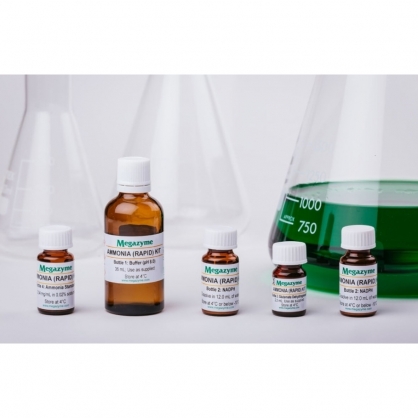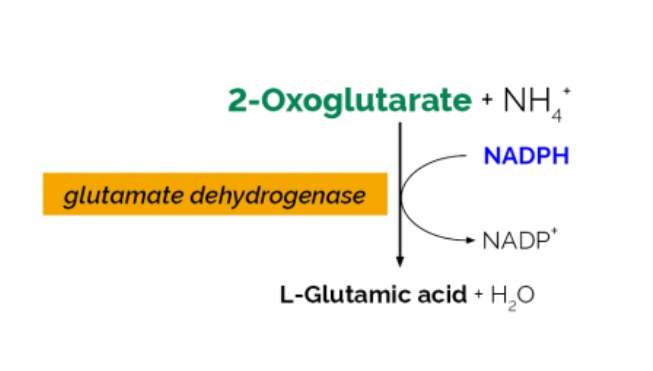- A. MANUAL ASSAY PROCEDURE:

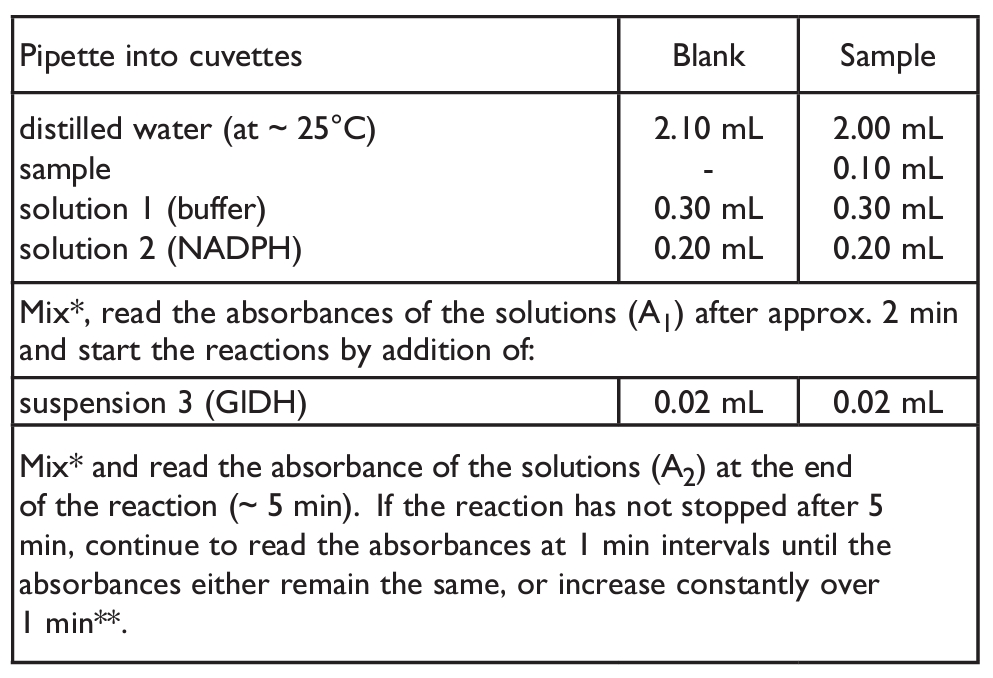

- B. AUTO-ANALYSER ASSAY PROCEDURE:
NOTES:
1. The Auto-Analyser Assay Procedure for ammonia can be performed using either a single point standard or a full calibration curve.
2. For each batch of samples that is applied to the determination of ammonia either a single point standard or a calibration curve must be performed concurrently using the same batch of reagents.
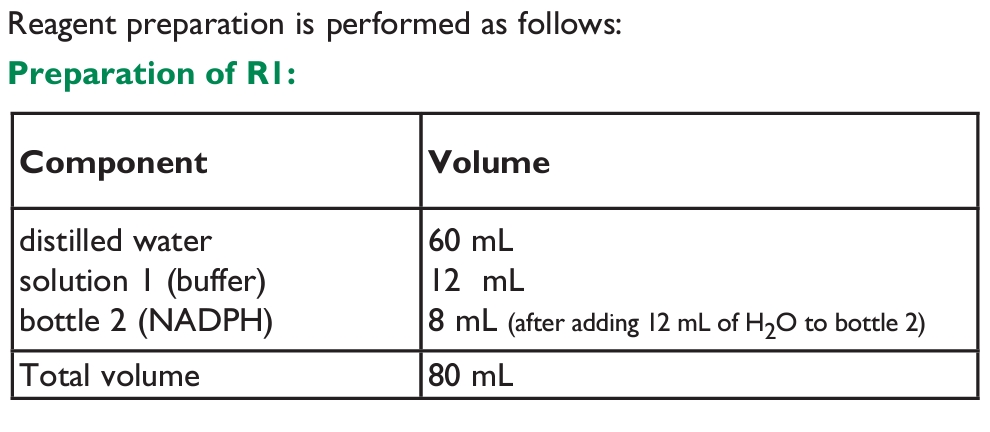
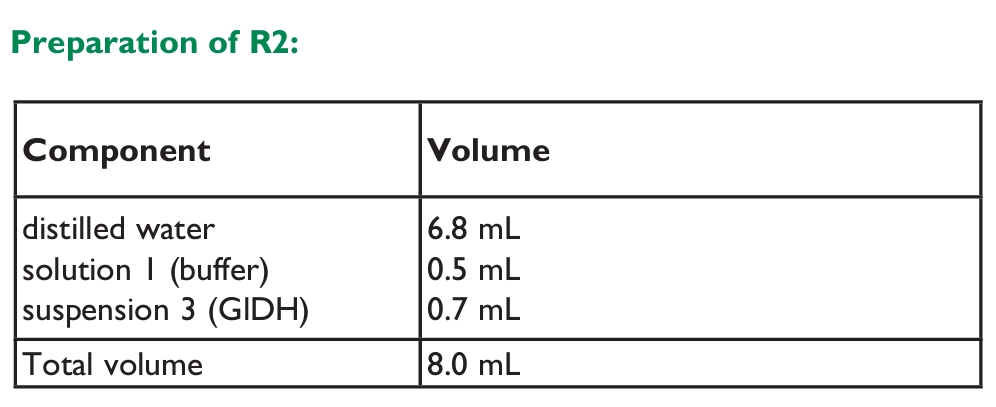
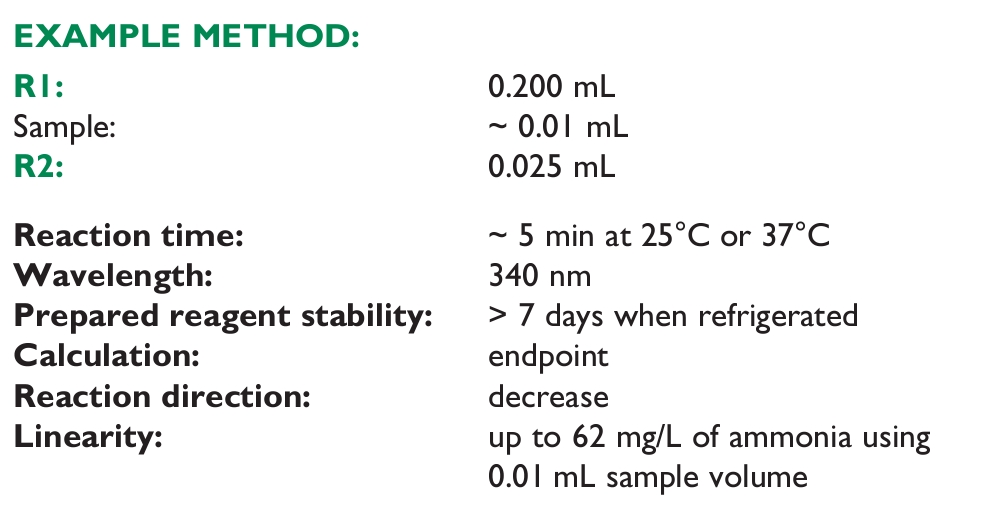
- C. MICROPLATE ASSAY PROCEDURE:
NOTES:
1. The Microplate Assay Procedure for ammonia can be performed using either a single point standard or a full calibration curve.
2. For each batch of samples that is applied to the determination of ammonia either a single point standard or a calibration curve must be performed concurrently using the same batch of reagents.

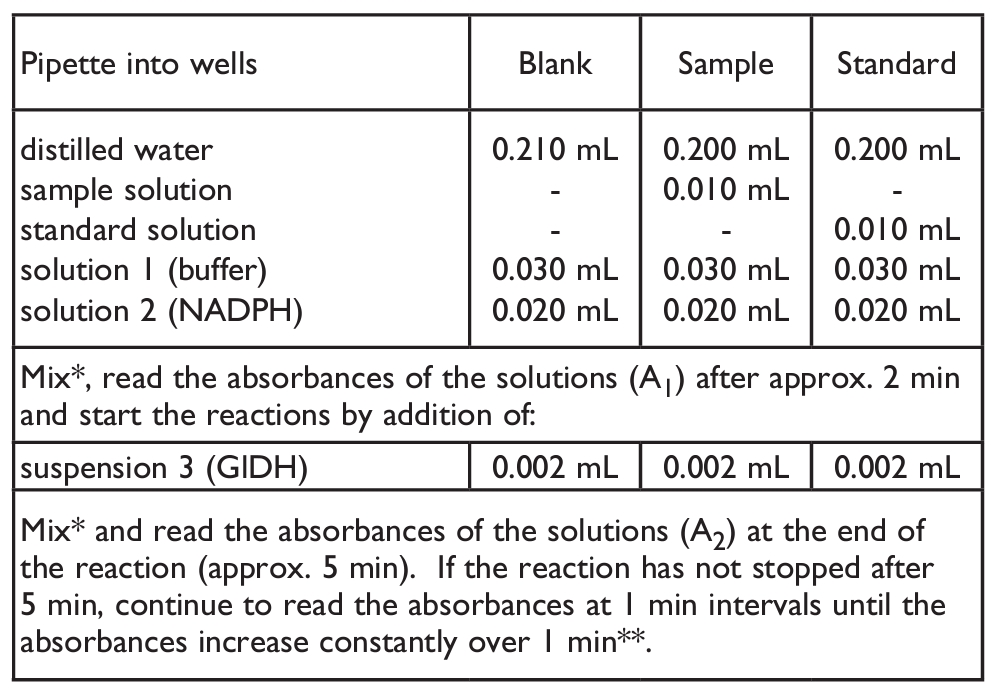

- 樣品準備 SAMPLE PREPARATION (Manual Format, A):
1. Sample dilution.
The amount of ammonia present in the cuvette (i.e. in the 0.1 mL of sample being analysed) should range between 0.2 and 7 μg. The sample solution must therefore be diluted sufficiently to yield an ammonia concentration between 0.01 and 0.07 g/L.
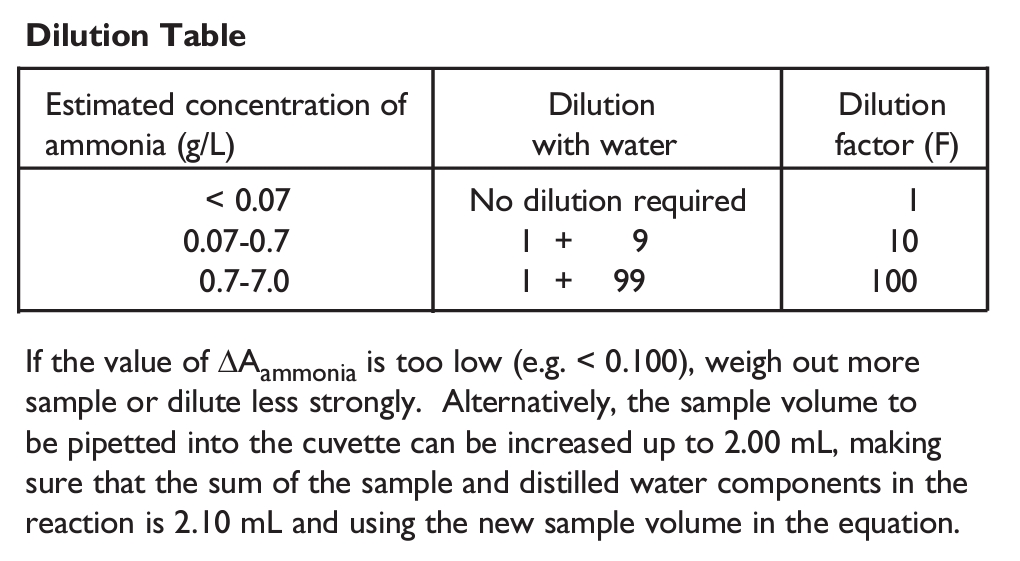
2. Sample clarification:
Carrez reagents cannot be used for deproteinisation as their use results in significantly reduced recoveries. Perchloric or trichloroacetic acid are used as alternatives (see specific examples).
3. General considerations.
(a) Liquid samples: clear, slightly coloured and approximately neutral, liquid samples can be used directly in the assay.
(b) Acidic samples: if > 0.1 mL of an acidic sample is to be used undiluted (such as wine or fruit juice), the pH of the solution may need to be increased to approx. 8.0 using 2 M NaOH.
(c) Carbon dioxide: samples containing significant quantities of carbon dioxide should be degassed by increasing the pH to approx. 8.0 with 2 M NaOH and gentle stirring, or by stirring with a glass rod.
(d) Coloured samples: if required, a sample blank, i.e. sample with no GlDH, should be performed in the case of coloured samples.
(e) Strongly coloured samples: if used undiluted, strongly coloured samples should be treated by the addition of 0.2 g of polyvinylpolypyrrolidone (PVPP)/10 mL of sample. Shake the tube vigorously for 5 min and then filter through Whatman No. 1 filter paper.
(f) Solid samples: homogenise or crush solid samples in distilled water and filter if necessary.
(g) Samples containing fat: extract such samples with hot water at a temperature above the melting point of the fat, e.g. in a 100 mL volumetric flask at 60°C. Adjust to room temperature and fill the volumetric flask to the mark with distilled water. Store on ice or in a refrigerator for 15-30 min and then filter. Discard the first few mL of filtrate, and use the clear supernatant (which may be slightly opalescent) for assay.
(h) Samples containing protein: deproteinise samples containing protein by adding an equal volume of ice-cold 1 M perchloric acid with mixing. Centrifuge at 1,500 g for 10 min and neutralise the supernatant with 1 M KOH. Alternatively, use trichloroacetic acid as described in sample preparation example (c) below.
商品特色
商品規格
- 商品規格
96 assays (manual) / 960 assays (microplate) / 960 assays (auto-analyser)
Bottle 1:
Buffer (36 mL, pH 8.0) plus 2-oxoglutarate and sodium azide (0.02% w/v) as a preservative.
Stable for > 2 years at 4°C.
Bottle 2: *2
NADPH.
Stable for > 5 years below -10°C.
Bottle 3:
Glutamate dehydrogenase suspension (2.2 mL).
Stable for > 2 years at 4°C.
Bottle 4:
Ammonia standard solution (5 mL, 0.04 mg/mL) in 0.02% (w/v) sodium azide.
Stable for > 2 years; store sealed at 4°C.
